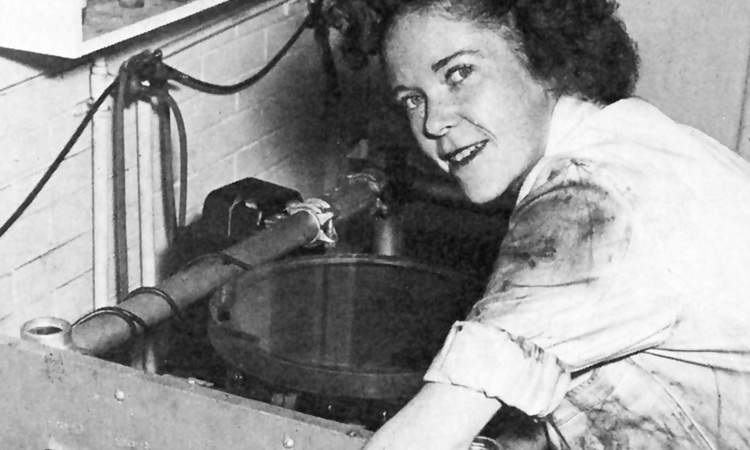Feature
OSA Centennial Snapshots: Global Conflict, Thin Films, and Mary Banning
The brief career of a talented, hands-on optical physicist has much to say about the status of optics, and of women scientists, at midcentury.
 Mary Banning operates the knife switches powering one of the evaporators at the Institute of Optics, circa 1944. [Mary Banning Friedlander/Opt. News 13(6), 10 (1987).]
Mary Banning operates the knife switches powering one of the evaporators at the Institute of Optics, circa 1944. [Mary Banning Friedlander/Opt. News 13(6), 10 (1987).]
The year was 1941, and Brian O’Brien, the director of the Institute of Optics at the University of Rochester, N.Y. (USA), faced a dilemma. With World War II entering its third year—and with the United States, though not yet involved in the war, tilting noticeably toward the Allied side—the Institute was increasingly involved in optical research for the U.S. military. Yet the military draft, which had resumed a year earlier, was already putting pressure on the supply of young men, a situation that would only worsen when the United States entered the war. Where could O’Brien find the right staff to keep the wartime optics research effort afloat?
…Log in or become a member to view the full text of this article.
This article may be available for purchase via the search at Optica Publishing Group.
Optica Members get the full text of Optics & Photonics News, plus a variety of other member benefits.
